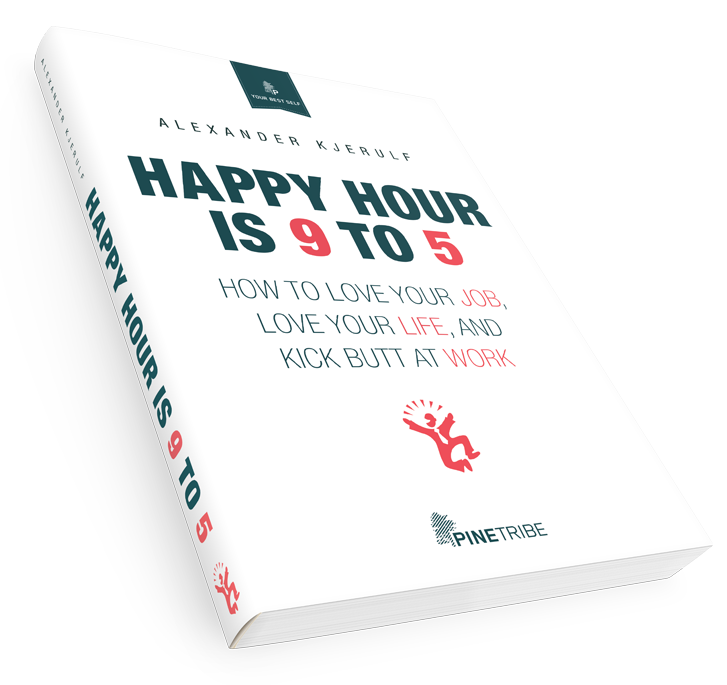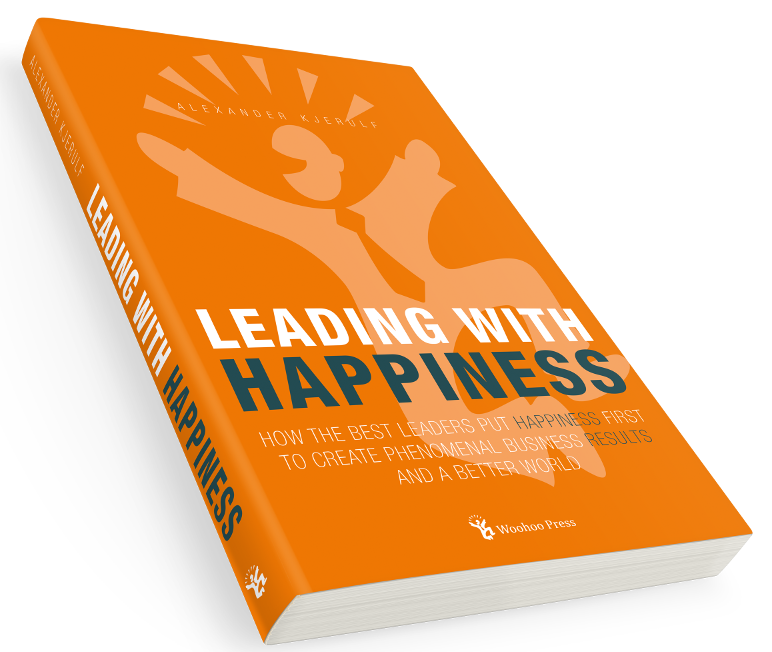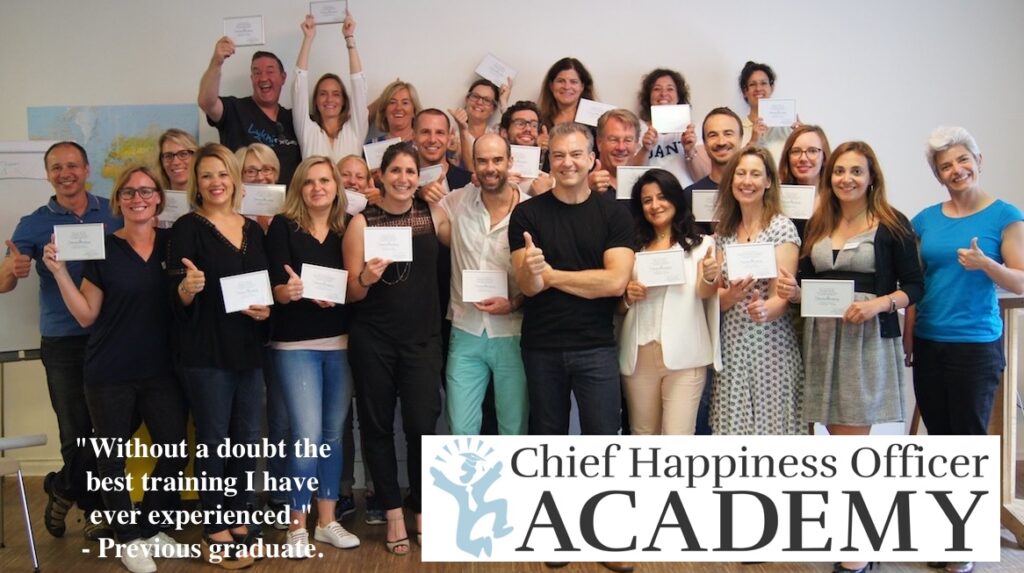
(sign from a Copenhagen shoe shop)
I got sick and tired of sales people at one point. There seems to be some unspoken agreement among them that all sales meetings must run like this:
- Boring company presentation, including their org chart and last 5 years financial statements.
- A pre-planned presentation of all their products, including some that could never, ever interest me.
- 5 minutes at the end for them to try to figure out what I would like to buy. Which’ll be nothing.
There’s gotta be a better way! And there is. Sales meetings don’t have to be an unpleasant affair in which pushy salespeople use every trick in the book to convince reluctant customers to buy their stuff.
I developed a better format for The Happy at Work Project for two reasons:First of all, with our name and our products we were forced to come up with a way to make sales meetings fun, or we would have lost all credibility right there. (If you’ve never heard of us, we do workshops, presentations, conferences and board games to make people happy at work).
Secondly I’ve tried being the victim target potential customer of many traditional sales pitches, and I just couldn’t bear the thought of inflicting that experience on potential, unsuspecting customers.
When using the meeting format described below, I have repeatedly seen clients switch from a defensive, arms-crossed, you-can’t-trick-me-into-buying- nothing-buster posture to a relaxed, positive atmosphere where they’re asking me interested questions – rather than me trying to ram information down their throats. Simply speaking, sales meetings become fun.
Here’s how I do it.
1: You’re not there to sell
First of all, we don’t call them sales meetings, we call them customer meetings. This is not just semantics, the point truly isn’t selling – the point is to meet a potential customer, to learn about that customer and to let them learn about what you can offer.
You’re not there to sell – you’re there to help the customer make a wise decision (this idea is courtesy of my Iowan friend Mike Wagner). Of course you’re there in the first place because you believe in the quality of your products/services and you believe the customer needs what you can deliver. If this isn’t so, why did you approach this customer at all?
And that is the fundamental difference: Is selling a matter of salesman vs. customer or is it a matter of working together. Our meeting format creates a setting where seller and buyer work together to create value for both.
2: Frame the meeting
I very briefly introduce myself and my company, and then take a little time to frame the meeting.
Time: All our meetings are planned for a 1 hour duration, but I still always start by fixing the time frame, saying “I’d planned to finish no later than X o’clock. Is that OK?” Sometimes the customer will say, “That’s fine I have a meeting right after” and then I always offer to end our meeting 5 minutes early.
Content: Then I explain that in my experience, the meetings go better if I can spend some time asking about them first. I can talk for a long time about our products, but if I don’t know something about the customer, I may not say anything that’s relevant to them. Then I ask if that’s OK.
Agreeing to these things up front puts the customer in charge of the whole process. While you will of course be running the meeting, you do so with their full consent.
3: Ask a lot of good questions
This meeting is not about you. It’s about the customer. We have a list of good questions to ask, and the first question is always this: “What made you take time for this meeting?”
This is an amazing question, because it goes right to the root of why you’re talking to that customer. We’re all busy people, and there’s a reason this person has taken an hour out to talk to you. The entire point of the meeting is to find that reason. So why not ask up front?
Also, our last question “What benefits could your organization achieve, if people were happier at work???? is crucial, because right there, the customer will supply you with all the selling points. Substitute your own argument instead of “happier at work” here.
Asking questions is important, because successful customer meetings are the ones where the customer does most of the talking. Also, this means that whether or not the meeting results in a sale, you will still walk away with new knowledge.
4: Present your offerings on 1 (one) page
We then present one sheet of paper that describes our work and our products. Yes, that’s right, one single, solitary sheet.
At this point many customers are expecting (or dreading) a 20-slide corporate PowerPoint presentation, and they’re unfailingly relieved and happy when I pull out just this one piece of paper and explain our offerings based on that.
“But my products will never fit on one page” I hear you cry. Oh, yeah? Well if you can’t describe yourself and your products simply enough to fit on one page, then you’re not ready to talk to potential customers yet. They deserve that level of clarity and simplicity.
Our presentation focuses on what we do, i.e. the actual products and services we can deliver – and very little on who we are. The paper also contains a short description of how we work and some (great) customer quotes.
Of course, having just learned a lot about the customer, it’s easy for met to connect our offerings to their business and to focus more on products they can use. It becomes a targeted presentation, tailored to that specific customer – and boy, do they ever appreciate that.
Remember to constantly stop and ask the customer “How does that sound?” or similar. Don’t go into your entire spiel and then ask at the end. You might ask after every product: “How could you apply this in your business?”
5: Wrap up the meeting
We always end the meeting a few minutes before the agreed time. This shows respect for the customer’s time, and avoids that fidgety few minutes at the end where the customer is subconsciously wondering whether the meeting will end in time for her to make her next meeting/appointment.
There seems to be an unstated belief among sales people that long meetings = good meetings. That the longer you can keep the meeting going, the more interested the customer must be. Wrong, wrong, wrong.
At the end of the meeting, we ask:
“How did you like the meeting? Did you get all the information you need????
“Would you like to be added to our mailing list so you get our newsletter????
“How would you like me to follow up on the meeting? Should I call you in X weeks????
This ensures customer commitment on whatever follow-up we decide on.
Step 2 takes just a couple of minutes, while step 3 (asking about the customer) should take about 25 minutes of a one hour meeting. You then have 20 minutes to present your products and let the customer ask questions about them and 5 minutes to end the meeting.
If you find yourself dreading sales meetings or find yourself uncomfortable in a traditional salesman role, give this method a shot. Not only will you enjoy meeting customers this way – you’ll also sell more.
If you liked this post I’m pretty sure you’ll also like these:



Leave a Reply